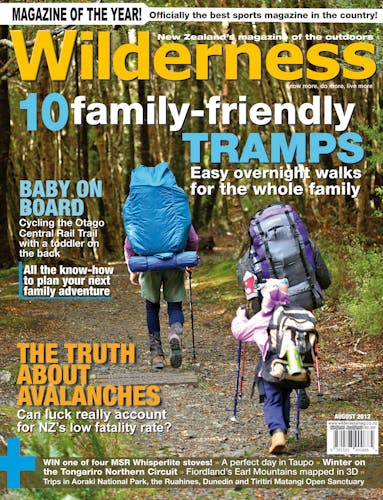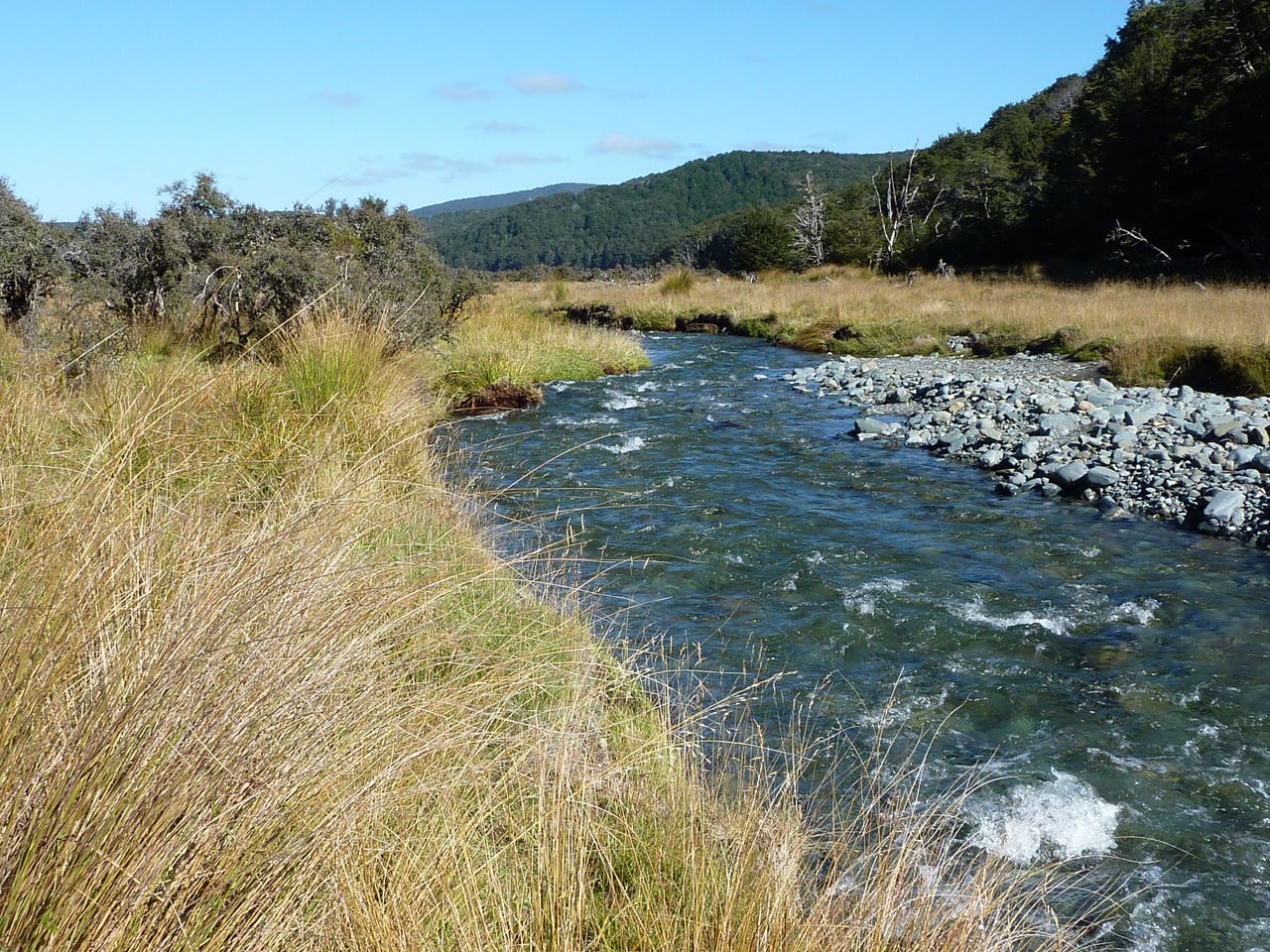Court battle looms over development proposals
Te Anua locals are vowing to fight the proposed Milford Tunnel and monorail projects in the courts if the Minister of Conservation grants approval for the projects as expected later this year.
The Save Fiordland group held a town meeting earlier this week where it was decided to form an incorporated society and to start fundraising for the looming court battle should the minister grant concessions to Infinity Investment Groups which wants to build a monorail through Snowdon Forest and parts of Fiordland National Park, and Milford Dart Ltd which is hoping to construct a one-lane tunnel beneath the mountains of Mt Aspiring and Fiordland National Parks.
One of the primary concerns of Save Fiordland is that both developments would jeopardise the area’s UNESCO World Heritage status. Fiordland National Park and Snowden Forest are both in the Te Wahipounamu World Heritage Area.
“I’m absolutely convinced it will damage its reputation,” said Save Fiordland spokesperson Daphne Taylor. “It’s an amazing area that’s internationally recognised. And our tourism economy – not just Southland’s, but New Zealand’s – depends on it. People come here because we have world heritage areas.
“I would hate to think they were going to be called into question because of these developments.”
In 2009 the Elbe Valley in Dresden, Germany, was removed from UNESCO’s list of World Heritage Areas because of a bridge that was built through the valley. UNESCO said the €160m ($252m) bridge destroyed the “universal value” of the 18km-long section of the valley which had been protected.
In another twist, when Wilderness asked Taylor if she believed either group had the money to finance the multi-million dollar projects she replied that no-one “expects either proposal to be built by the proposers”.
“These guys are property investors, they do property investment well and then they flick it on and they tend to flick it on to overseas investors,” said Taylor.
In the October 2011 issue, Wilderness Gale reported on how DOC gave freehold title to Crystal Valley – a 198ha parcel of sub-alpine land valued at $320,000 in the Craigieburn Range to Blackfish Ltd, an Australian-owned company which also owned neighbouring Porter’s Ski Area. In return DOC received a 70ha block of coastal lowland forest at Steep Head Gulley on Banks Peninsula valued at $600,000.
Blackfish went on to sell its interests in Porters Aki Area, including Crystal Valley, for $6.9m to PSA Capital Ltd, which is 60 per cent owned by Russian investors and 40 per cent owned by Australian interests.
At the time, Michael Sleigh, a current director of Milford Dart Ltd, was a director of Blackfish.
When asked if MDL planned to build the tunnel itself if the concession was granted or if it would sell the concession on, Sleigh said: “Our intention has always been to build the tunnel. That’s what we’ve applied for, but we’ll see.”
He said there is interest among investors to help finance the tunnel. “There has been interest over the years in it and we just remain of the view that it’s a compelling proposition.”
– Alistair Hall
When we asked readers which of these statements is avalanche fact, not avalanche myth, this is how they responded
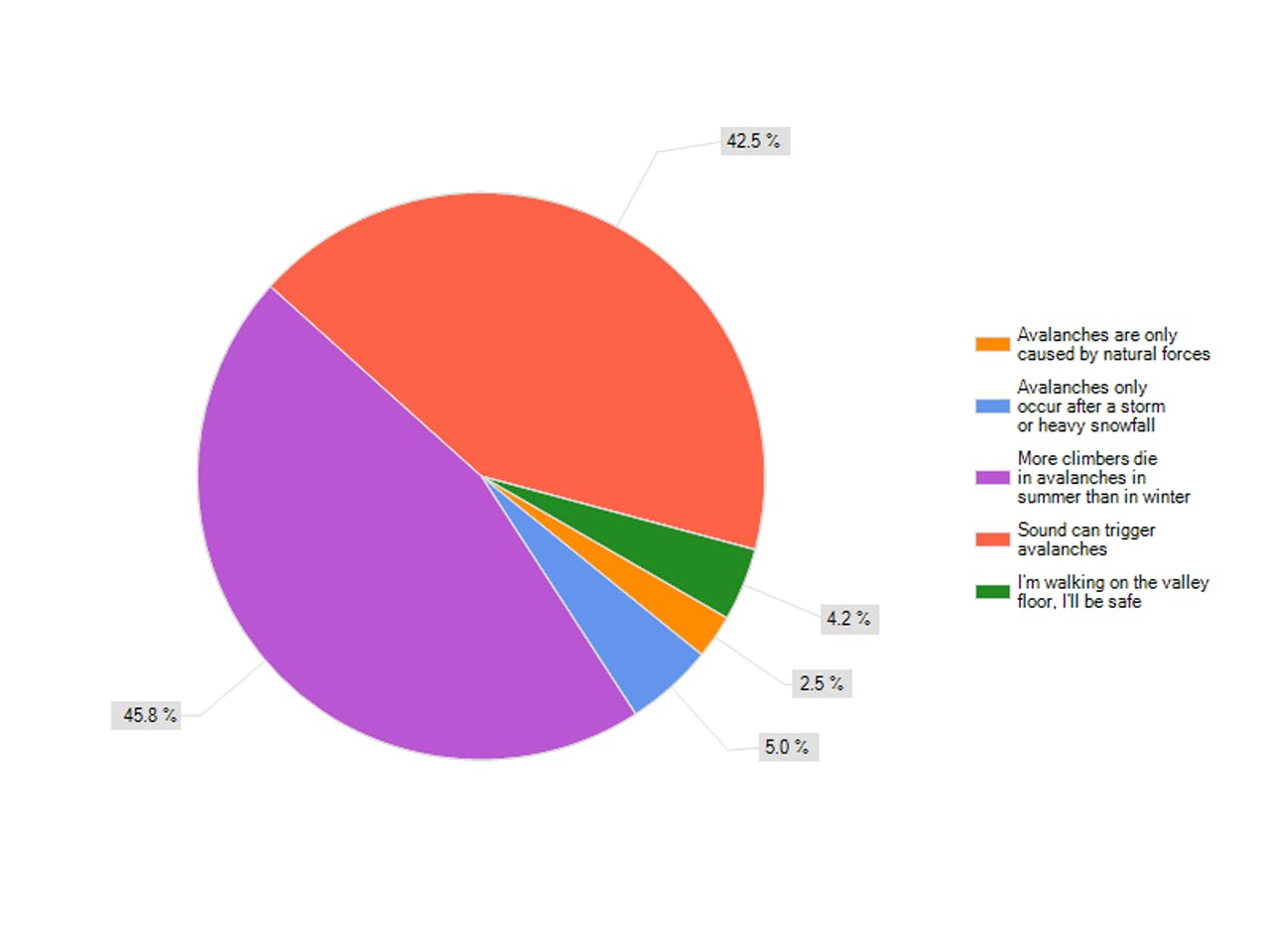
The expert says
According to Andrew Hobman, Mountain Safety Council’s avalanche programme manager there are several myths associated with avalanches.
He says up to 90 per cent of avalanches that involve people are triggered by the party and are not the result of natural forces.
However, the stats show more climbers die in avalanches in summer than die in winter – proving when you’re in avalanche terrain you can never let your guard down.
Make as much noise as you like – you’re not going to set off an avalanche that way. “The yodelling shepherd at the bottom of the valley cannot trigger an avalanche,” says Hobman.
Find out more about avalanches ‘The truth about avalanches’ in the avalanches article.
Award-winning Wilderness

Posing for photos at the Magazine Publisher Awards at the Pullman Hotel on June 28, 2012 in Auckland, New Zealand. Photo: Simon Watts/Getty Images for the MPA
Wilderness has won the coveted Magazine of the Year award at the Magazine Publishers Association annual awards.
Wilderness competed in the Sport and Leisure category and beat out other finalists including NZ Rugby World, NZ Fishing World and Boating New Zealand. It is the second time Wilderness has scooped the award, which is hotly contested among publishers, and recognises Wilderness’s leading position in the sport and leisure category. But that wasn’t the only success for Wilderness on the night – staff writer Josh Gale won Journalist of the Year for his outstanding feature writing. Wilderness was singled out for developing a niche market and ‘growing readership during some tough years’. The judges also praised Wilderness‘s print and online presence: ‘The merging of print and online is very impressive. The whole team should be extremely proud. A great package!’
The judges said of Gale’s writing: ‘Impressive, a deserving winner’, ‘Great subject matter’, and ‘A fantastic grasp of the issues and presents them well’.
Concessions granted for aerial hunting in wilderness areas
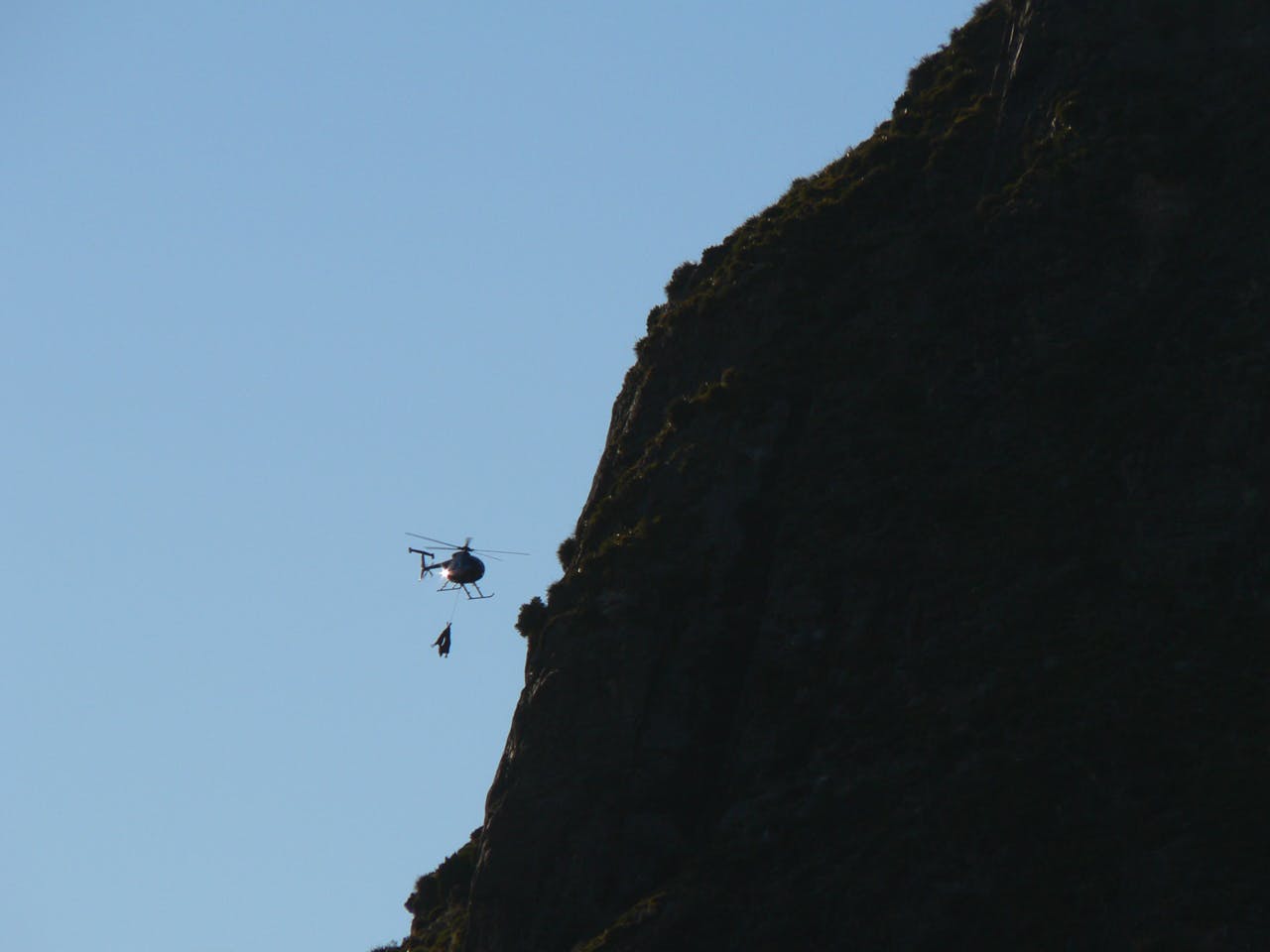
The NZDa says heli-hunting will have detrimental effects on the recreation opportunities of trampers and hunters. Photo: Alistair Hall
New Zealand’s last untouched Wilderness Areas have been opened up to aerially assisted trophy hunting (AATH) raising the spectre of helicopters buzzing around these untamed, untouched lands.
Despite, the Conservation Act 1987 specifically preventing any access by vehicles and livestock, the construction of tracks and buildings into Wilderness Areas, five AATH concessions for the Hooker-Landsborough, Adams and Olivine Wilderness Areas by associate Conservation Minister Peter Dunne have been granted.
They are being granted under section 17Q of the Conservation Act and section 22 of the Wild Animal Control Act.
Mr Dunne said he was obliged to consider the five applications within the framework of current legislation and has taken into account the recent public submission process.
“I am concerned about the actual and potential impact that AATH has on other users of public conservation land, therefore I have decided to grant the permits for two years, rather than the 10 years applied for,” Mr Dunne said. “Furthermore, AATH will not be allowed within the Olivine Wilderness Area unless animal numbers exceed departmental guidelines and more control is required – this will be determined by the Otago Conservator.”
Mr Dunne added: “I accept that AATH activities have an adverse effect on recreational ballot hunting and believe conflict can best be avoided through a total separation of the activities. Ways to achieve this separation will be considered by the Department of Conservation and the Tahr Liaison Group.”
One good piece of news for trampers was that AATH would be excluded from a proposed block, WA03, within the Hooker-Landsborough Wilderness Area. This is a small block in the Mt Hooker/Mark’s Flat area popular with trampers, climbers and hunters.
NZDA spokesperson Snow Hewetson was disappointed with the announcement. “Aerial assisted trophy hunting is totally inappropriate for those areas and for the designation of Wilderness Areas,” he said. “As far as I am concerned once you allow that kind of thing into a Wilderness Area, the designation of a Wilderness Area no longer exists in my opinion.”
He says people visiting these areas will be affected by helicopter noise as concessionaires fly their clients in and out. “If you’re there when the weather is fine it could be two or three times a day.”
Concession holders will have the following conditions applied:
- The concessionaire must not shoot or authorise shooting from helicopters except where a wounded animal needs to be killed for humane reasons;
- The concessionaire must not carry out any form of hazing of wild animals (being the persecution, harassment or maltreatment of wild animals using a helicopter); and
- The concessionaire must not use a helicopter to herd wild animals in any situation where that activity would interfere with:
- the safe enjoyment of public conservation land by other users;
- the control of wild animals by recreational hunting.
– Alistair Hall
DOC’s cost analysis for intentions ‘sky high’
Former chair of Arthur’s Pass Rescue and former DOC ranger Graeme Kates says DOC exaggerated the cost of managing its outdoor intentions cards at visitor centres around the country.
Kates resigned from both positions in November last year to protest DOC’s decision to remove its paper outdoor intentions cards in favour of the new Adventure Smart system.
DOC claims its decision to remove the cards and to instead adopt the Adventure Smart system had nothing to do with cost cutting or reducing its exposure to liability for accidents or deaths on conservation lands, but was instead to ensure a consistent approach for leaving outdoor intentions throughout the country as not all visitor centres around the country ran outdoor intention cards
Yet, based on correspondence acquired through the Official Information Act, DOC did conduct a cost/benefit analysis of the paper intention card system.
The documentation reveals DOC calculated it cost $95,000 a year for it to manage its paper-based visitor intentions practice.
The cost of the Adventure Smart system is shared with the NZSAR Council and includes a set-up cost of $8000 and annual ongoing costs of $5000.
DOC came to the figure of $95,000 by finding the number of estimated intention forms received at each visitor centre around the country and multiplying it by 15, the number of minutes DOC claims it takes for staff members to process each intention received, dividing by 60 (minutes) and then by multiplying that number by $25 an hour to find the total cost per visitor centre.
Documentation gained from the Official Information Act stated Arthur’s Pass National Park visitor centre receives an average of 2136 visitor intentions which DOC calculated would cost $12,500 to manage annually.
Kates said these “estimates are phenomenal”.
“In Arthur’s Pass the actual cost is just the printing cost of the card which is something like $600 to $800 dollars a year to print about 3000,” Kates said. “They factored in the wages of a DOC staff member as15 minutes per card, but we sat down with stop watches during peak season and timed it and we could barely get beyond 20 seconds. That’s just not how it works.”
DOC visitor services manager Gavin Walker said the decision to remove the paper intention cards from visitor centres around the country was “not the department shirking its responsibilities” or to save money.
“We’re always interested in where we spend money and how much time goes into things, but this was based on a fundamental belief that [Adventure Smart] is a better system for users across the country,” Walker said. “I am very confident this is a sound approach for New Zealand because it reinforces our own responsibility as individuals to do decent planning and to let people know the details.”
Mountain Safety Council chief executive Darryl Carpenter said it doesn’t really matter how someone leaves their intentions as long as they do.
“People can still leave a post it note on their fridge or leave a message on the back of an envelope as they’ve been doing for many years,” he said.
Sports NZ grants up for grabs
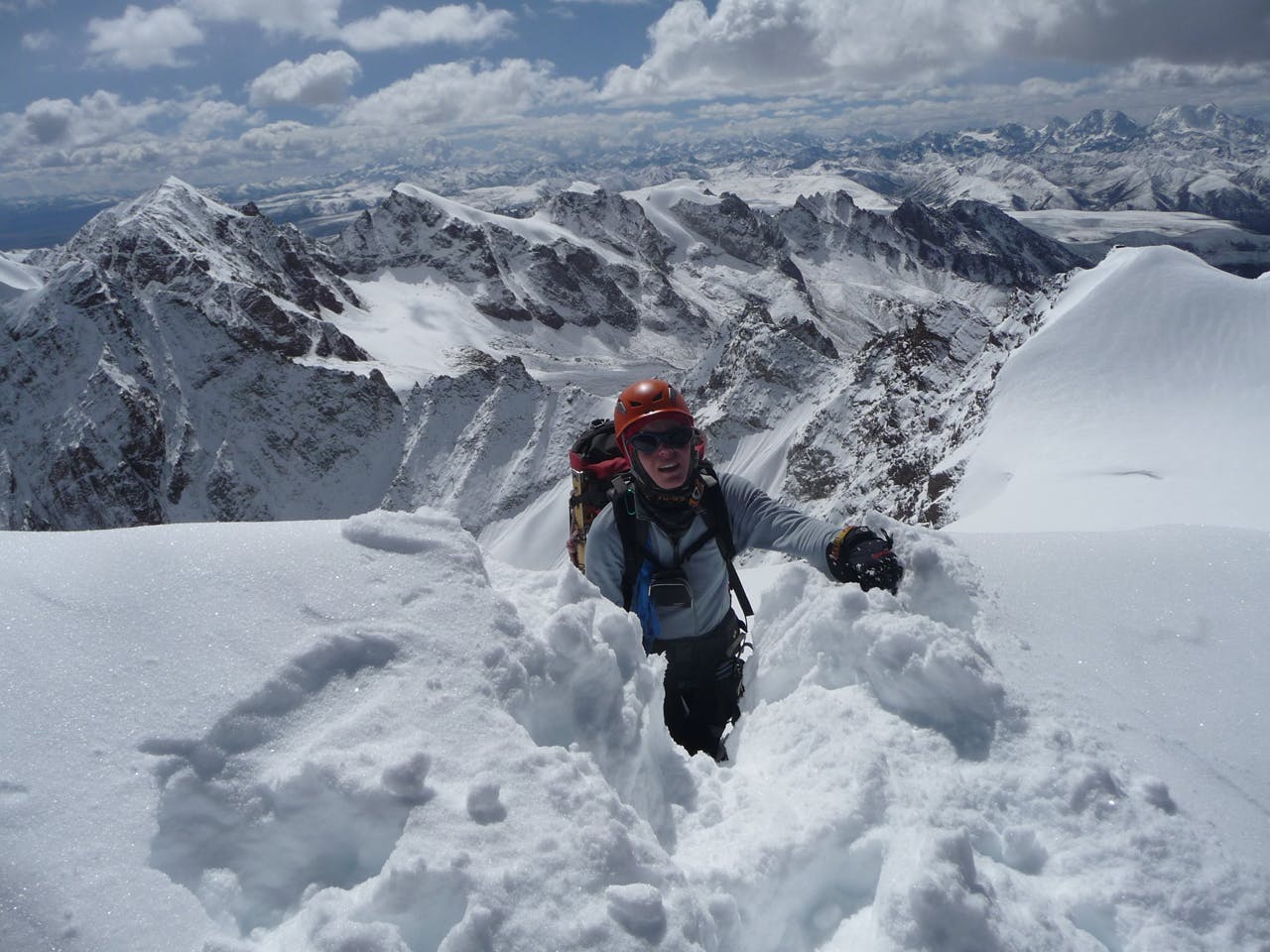
Kiwi adventurers are being given the chance to turn their dreams into reality by applying for Sport New Zealand’s Hillary Expedition grants.
Applications are now open for the grants, which total $100,000 and typically comprise of grants ranging from between $10,000 and $25,000. The value of each grant offered depends on the scale and quality of the application.
Sport NZ Chief Executive Peter Miskimmin says the biennial Hillary Expeditions are a great opportunity for adventurous Kiwis to follow in the footsteps of the programme’s namesake.
“New Zealand is known as a nation of great adventurers,” Miskimmin said. “They inspire other New Zealanders with their extraordinary feats. This is an opportunity for Kiwis who have a desire to achieve something special in the great outdoors and make it happen.”
Expeditions funded in the past have involved world firsts. The 2010/2011 round of grants included the Gradient and Water team, which successfully discovered and paddled eight never-before-paddled river ascents in Papua New Guinea; the Speedfly8000 expedition, which successfully summited the 8000m Mt Manaslu; and the Extreme Cave Team, which found a cave over 1000m deep in New Zealand with its first grant, then discovered another impressive cave system with its second grant. See an interview with team lead Kieran McKay below.
Miskimmin said outdoor adventurers push themselves beyond their limits, in extreme environments to achieve their goals. It’s a spirit he says is worthy of support and admiration.
“It takes a great deal of organisation, courage, determination and physical endurance to achieve these world firsts in the outdoors. New Zealand adventurers are role models for other Kiwis so I encourage those with big dreams to apply,” Miskimmin said.
To qualify for a grant, expeditions might include any one, or a combination, of outdoor activities such as tramping, mountaineering, rock climbing, cross-country skiing, white water and/or sea kayaking, mountain biking and sailing.
Application forms are available from www.sportnz.org.nz and close at 4pm on August30. Successful applicants will be announced by December 2012.





